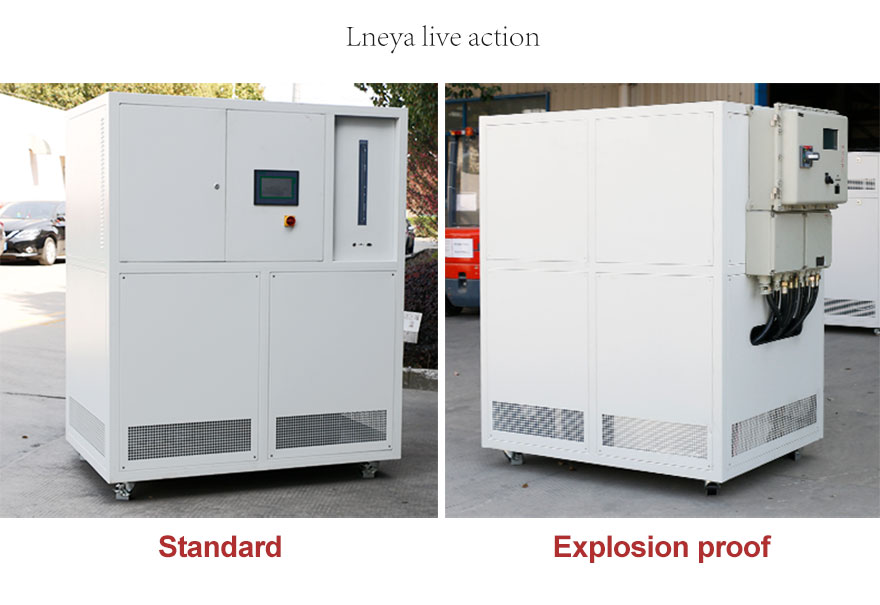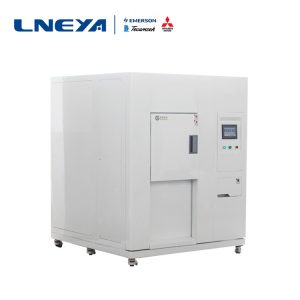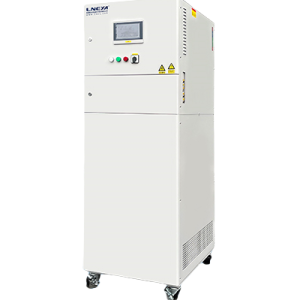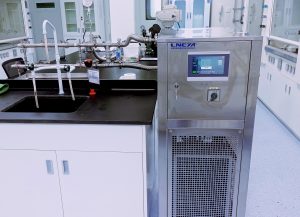Precautions for customers installing Lneya’s cryogenic industrial chillers
One. When installing low-temperature industrial chillers, you need to pay attention to some installation requirements.
1. The cryogenic industrial chiller should be installed directly in a horizontal position, do not install it upside down or diagonally
2. Low-temperature industrial refrigerators generate heat during operation, and should ensure the circulation of cooling air. There should be a certain space around the installation. The generated heat is emitted upwards, so do not install it around heat-resistant equipment.
3. Freezers for low-temperature industry cannot be installed in places with various fiber paper sheets and metal fragments.

The water outlet of the cryogenic industrial chiller should be connected to the water inlet of the supporting instrument, and the water outlet of the instrument should be connected to the water inlet of the cooling circulating water machine.
Second, open the low-temperature industrial chiller, you can see the wiring terminals, do not connect the wrong wire when wiring. (Only high-power low-temperature industrial chillers have power connections)
1. The power supply must be connected to the main wire terminal. If the power supply is connected to other wire terminals by mistake, it will destroy the cryogenic industrial refrigerator. In addition, confirm whether the power supply voltage is within the allowable voltage range;
2. The ground terminal must be well grounded to prevent electric shock or fire accident;
3. Be sure to connect the terminal and the wire with a crimp terminal to ensure the reliability of the connection;
4. After completing the circuit connection, please check whether the connection is correct;
5. With or without wiring;
6. Is there a short circuit between the arrows and the connecting wire or short circuit to ground;
7. If the use temperature is below 5 degrees, please add antifreeze to the circulating fluid.
Low-temperature industrial chillers must be grounded, otherwise electric shock or fire accidents may occur. Wiring should be performed by professionals. Start the work after confirming that the power is off (OFF), otherwise an electric shock may occur.
Three. Operation of cryogenic industrial chillers
1. Check whether the check wiring is correct before starting the operation;
2. Whether the connecting water pipeline is correct and firm;
3. Confirm whether the water tank is filled with water.
Cryogenic industrial chillers are widely used and have certain applications in the pharmaceutical, chemical, petroleum and other industries. In use, you need to know their use knowledge in time to avoid problems.
Recommandations connexes
-
Méthode de refroidissement de la chambre d'essai de choc thermique à trois éléments intégrés
1280The three integrated thermal shock test chambers are designed and manufactured according to user requirements. They are suitable for high and low temperature impact tests of high-temperature or low-temperature environments and for high-temperature...
Voir les détails -
Comment choisir un refroidisseur d'eau déionisée de laboratoire ?
1175L'eau pure fait généralement référence à l'eau qui a été traitée pour éliminer les impuretés, les ions, les matières organiques, etc. Les exemples les plus courants sont l'eau distillée, l'eau obtenue par osmose inverse et l'eau déionisée. L'eau déionisée a une faible conductivité en raison de son...
Voir les détails -
Il existe généralement trois façons de contrôler la température des réacteurs de laboratoire
9471. Manual control: Manually operate the knob on the front of the reactor controller.2. Control by PC: The PC and the controller are connected by a network cable, and the operation is carried out on the PC.3. Controlled by thermostat: Silicone oil...
Voir les détails -
LED LCD display thermal test system operation process
967The integrated semiconductor industry has developed rapidly in the past two years, which has driven other industries around it. The chip thermal test system is one of the products. In order to avoid machine failures in the LED liquid crystal displ...
Voir les détails
 LNEYA Industrial Chillers Fabricant Fournisseur
LNEYA Industrial Chillers Fabricant Fournisseur














